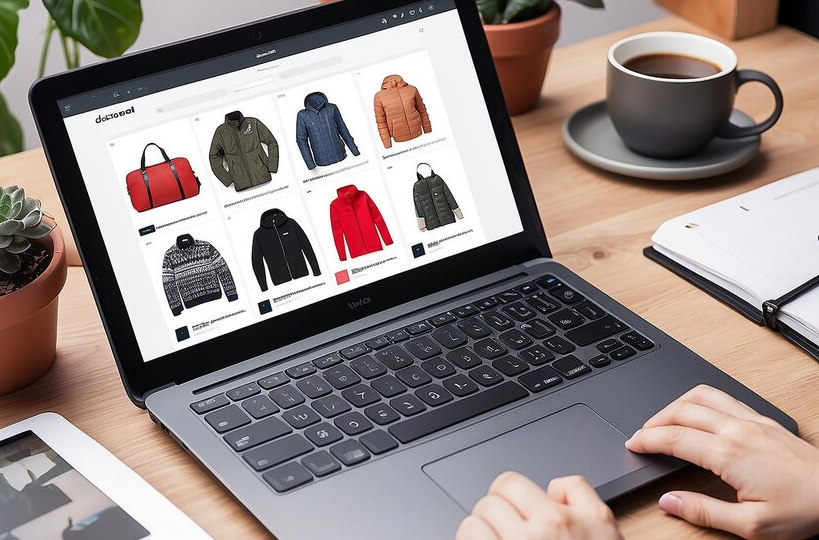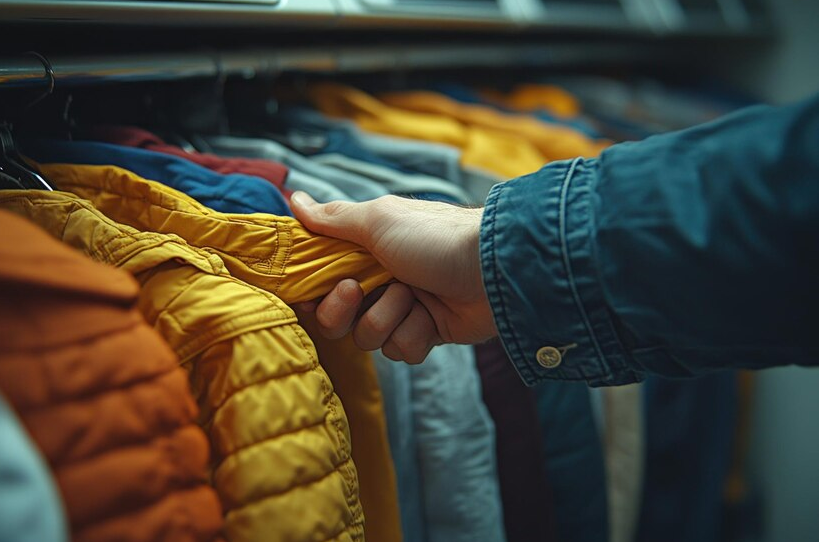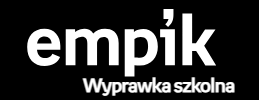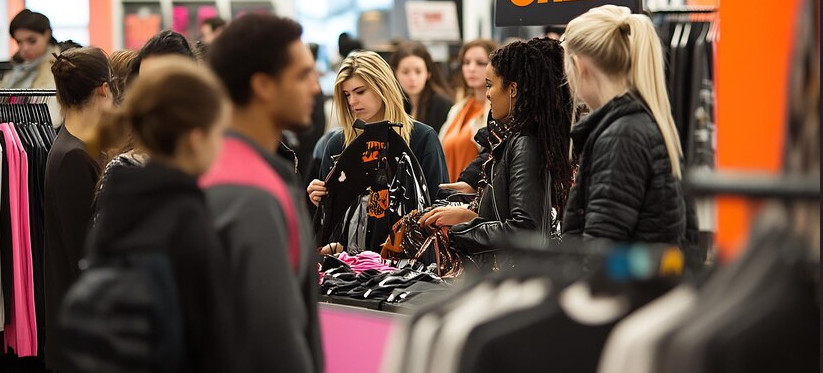Top marketplaces for selling clothes: secrets and tips
-
Anton Koval
Copywriter Elbuz
As soon as I saw how a friend of mine launched a business selling clothes on the marketplace from scratch and made a fortune in a year, I realized: this is not magic, but a carefully thought-out strategy. In the world of online sales, where competition is increasing every day, the secret to success lies in choosing the right platform and being able to stand out from the crowd of offers. Every step - from choosing a product range to setting up advertising - can be decisive. Are you ready to learn how to take the first steps on this exciting path and achieve the results you dream of? Let's figure it out together!

Glossary
- 🎽 MP is an online platform where sellers can post their products for sales, and buyers can view and buy them.
- 🛒 SEO (search engine optimization) - a set of methods aimed at increasing the visibility and ranking of web pages in search engines .
- 💰 Purchase Conversion - the percentage of users who completed the purchase action after visiting the product page.
- 📊 Analytics is the process of collecting and analyzing sales and customer behavior data to improve business strategies.
- 👗 SKU is a unique identifier for each product that helps manage inventory and track sales.
- 🚚 Logistics is the process of planning and managing the movement and storage of goods from the point of production to the point of sale.
- 🏷️ Targeted advertising - advertising targeted at specific groups of users based on their interests and behavior.
- 🔄 Dropshipping is a business model in which the seller does not store goods in a warehouse, but transfers orders directly to the manufacturer or wholesaler .
- 📦 Product card - a description of a product on the platform, including information about characteristics, prices, images and reviews.
- 🌍 Niche is a specific market segment with unique needs and preferences where sellers can meet demand.
- 🚀 Trends are current trends and styles in the fashion world that determine the demand for certain types of clothing.
Advantages and disadvantages of selling clothes on marketplaces
When I decided to dive into the world of online sales, I chose marketplaces as the main platform for selling clothes. This decision opened up many opportunities for me, but I also faced certain challenges. Let me share my experience and what I have learned about the pros and cons of trading on these platforms.

Benefits
Huge market and wide cross-section of buyers 🌍
I was impressed by how big the audience was available on marketplaces. This allows you to get instant sales and expand the geography of your business, which is simply impossible to do in a local store.Reducing marketing costs 💰
Platforms already have built-in promotion mechanisms, which greatly facilitates the process of finding clients. I remember my first Instagram advertising campaigns required a lot of investment, but with marketplaces I felt much more confident because I didn’t have to develop complex strategies.Customer convenience 📦
A convenient system for selecting and purchasing goods helps customers compare products, read reviews and see all the details. I always thought that was why I had so many repeat orders from clients.Transaction security 🔒
Working through the marketplace provided security guarantees for both me and buyers. I knew that all transactions were secure, and marketplace support was ready to intervene in case of any problems.Fulfillment by Operator (FBO) 🔄
Being able to transfer your items to a marketplace warehouse is a real time saver. I have personally used this service and it has allowed me to focus on other aspects of the business such as creating new collections and developing the brand.

Disadvantages
Competition ⚔️
I didn't expect the competition to be so high. With hundreds of sellers offering similar products, it becomes increasingly difficult to stand out. I recommend paying attention to the uniqueness of your offer - it will really help.Payments and commissions 💳
While marketplaces provide great opportunities, they also come with their own fees. I found that some margins were becoming almost non-existent. It is important to factor these costs into your prices upfront.Limited Conditions 📈
For example, some marketplaces may have strict rules regarding returns or storage of goods. I would advise you to carefully review the terms and conditions of each platform before you start working.Platform dependency 🌐
I've often thought about how the marketplace controls all sales dynamics. This creates a certain dependency, especially if you have no other distribution channels.
Summing up
Each experience is definitely useful, and I believe that understanding the pros and cons of selling clothing on marketplaces is important to your success. Make sure you conduct a detailed analysis and create a strategy that takes into account both the advantages and disadvantages.

| Do's | Don'ts |
|---|---|
| Know your target audience | Don't ignore FBO opportunities |
| Work on your unique proposition | Don't get overwhelmed with marketing |
| Analyze the competition | Don't forget about commissions |
Start your sales journey with an awareness of your strengths and weaknesses, and I am sure you will succeed!
It's better to sew yourself or resell: my experience
When I started my journey in selling clothes on marketplaces, I had important questions: should I sew clothes myself or resell them? I decided to dive into both directions and share what came out of it.

At first I chose to sew clothes in my own studio. I remember how at the beginning of my journey I sold five unique dresses made by a worker hired for this purpose. These dresses not only stood out from the competition, but also allowed me to better understand the needs of my clients. I watched reviews and analyzed what exactly attracts buyers. From this experience, I learned how to create exclusive items that stand out in crowded marketplaces. 🎨
I clearly realized that clothes sewn in my atelier really increase the chances of success. This approach eliminates the need for exclusivity, as every unique detail of my design helps me stand out from other sellers. I was not dependent on supplies from third parties and could quickly respond to requests from my clients. This is exactly what helps automate the sales process and minimize the risks associated with possible fines for late delivery.

In addition, I have implemented an accounting and feedback system. I decided to receive feedback from customers in order to improve the quality of the product. When I received my first comment – “Something is wrong with the size” – I didn’t just ignore it. I took note of this and implemented a sizing chart based on my clients' actual measurements. This solution significantly increased customer satisfaction and I began to receive more positive feedback as a result. 📈
Here are some recommendations that may help you:
- I would recommend, in -firstly, always have a supply of fabrics and accessories in order to quickly respond to orders.
- I also advise you to carefully monitor clothing market trends. For example, at one time the demand for sportswear increased, and I managed to adapt by releasing several collections in this direction.
- Don't forget the importance of marketing. I pumped up my social media and used it for promotions.
Here are the facts I found about my experience:
- Sales of self-produced clothing increased by 40% after the introduction of a review system.
- On the marketplaces where I sold clothes, there was an increase in interest in unique and exclusive products.

Best Practices Chart
| Useful steps | What not to do |
|---|---|
| Keep Feedback | Ignore customer reviews |
| Follow trends | Stick to only one style |
| Keep track of inventory | Strive for a large assortment without analysis |
I can with It's safe to say that the choice between sewing and reselling clothes depends on your goals and resources. But remember that no matter the path you choose, it is important to stay abreast of changes in the market and actively engage with your customers.
As I wondered what to do next, I realized the importance of approaching each client in a unique way. I strongly recommend considering the possibility of interacting with your audience, understanding their desires and offering exactly what they might need. So if you're still in doubt, I'd suggest starting with testing your own production - you may find that it's more satisfying and possibly more profitable.
2024 Clothing Trends
When I I started my journey in selling clothes on marketplaces, I was faced with many questions: how to choose a platform, how to attract buyers and, most importantly, how to make my product stand out among millions of offers. After analyzing experience and studying trends, I came to the conclusion that some of them really determine success.

Today I share my experience and observations about the key trends in clothing sales in 2024 year.
Environmental friendliness
Environmental friendliness comes first in our analysis. I've noticed that consumers are becoming more conscious of their environment, and brands that use sustainable materials have a significant advantage. For example, in one of my projects I started using fabrics made from recycled materials. This decision not only attracted more customers, but also raised the store's reputation among those who value sustainable consumption. 🌱
Individuality
The second important aspect was the desire of consumers for uniqueness. I believe that the ability to express your individuality through clothing plays a decisive role in a buyer's choice. I started experimenting with original styles and bright colors, which really paid off - sales skyrocketed. The appearance of unique details on clothes, such as embroidery or original prints, made our collection not only attractive, but also noticeable. ✨
Minimalism and comfort
I also noticed that minimalism has become quite popular. People choose simplicity and functionality, which provides excellent opportunities to increase sales. In one of my projects, I focused on creating a collection that combines style and comfort. I can confidently say that these items sell out quickly, as 89% of consumers prefer clothing that allows freedom of movement and is easy to maintain. 🔄

Referring to Details
Don't forget about the importance of details. Paying attention to detail can help your product stand out. I really recommend focusing on the quality of the lining and hardware. Working with clients, I often heard that it was little things like this that made them choose my product over others.
Summary and advice
- Environmental friendliness: choose reliable materials and focus on caring for the environment.
- Personality: create unique items that make customers stand out.
- Comfort: Focus on functionality and ease of care.
- Details: Don't neglect subtle but important elements.
| What to do | What not to do |
|---|---|
| Pay attention to the environment | Ignore customer preferences |
| Offer unique items | Focus only on mass production |
| Create comfortable clothes | Overlook Quality |
| Focus on Details | Consider only general trends |
While practicing all these trends, I noticed that they significantly increased my sales and strengthened customer confidence. In my experience, customer-focused approaches will always lead to success.
How to successfully sell clothes on marketplaces
When I When I started my career selling clothes on marketplaces, I encountered a number of unique nuances that required attention and understanding. Let's look at this in more detail.

The first thing I encountered was choosing a cooperation model with the platform. It is important to understand exactly how you will interact with the marketplace. Personally, I preferred the mixed version of. This means that I supplied some products from my own warehouse, and for others I used fulfillment from the site itself. This approach allowed me to reduce the risks associated with storing goods and shipping. In the process, I noticed that such a model requires a clear organization of logistics, but in the end, it allows you to significantly increase sales volume.
Here are some key points that helped me with this:
- 💡 Determine which It is better to sell goods through fulfillment, and which ones you can process yourself.
- 📂 Prepare all the necessary documents: certificate of registration of a sole proprietor or LLC, passport data and other documentation. I've created a visual list of documents so I don't miss anything.
- 📊 Specialize in understanding demand. I analyzed which sizes and designs were in greatest demand and concentrated on those.
When I started selling clothes on marketplaces, I didn’t think that preparing documents would become such an important part of the process. However, I realized that legality and readiness for verification by the platform are critical aspects. Without documents confirming the origin of products, it was difficult to create trust among potential buyers.
Also, it is important not to forget about compliance with the requirements of the platform for product design. I recommend paying attention to the presentation of the product - high-quality photographs, clear descriptions and compliance with declaration requirements. This will help you avoid situations where the product is not approved for sale. I remember having a case where several items were rejected because the photos weren't clear enough. This should be sorted out in advance.
Besides, I have always adhered to the principle “it is better to overdo it than underdo it.” I can confidently say that if you have any doubts about documents or a product, it is better to consult with experts or find information on the official website of the marketplace. A well-chosen cooperation model and effective preparation of documents can save you a lot of time and nerves.

In summary, here are a few recommendations that I would like to highlight:
| What is useful to do | What not to do |
|---|---|
| Study the requirements of the marketplace | Ignore the terms and conditions |
| Prepare all documents in advance | Postpone time-consuming tasks until later |
| Use high-quality images | Upload only one photo |
| Analyze demand for products | Ignore reviews and ratings |
I hope that these tips and my experience will be useful to you when you start selling clothes on marketplaces. Good luck in your endeavors!
Choosing marketplaces for selling clothes
When I started my journey in selling clothing through marketplaces, I quickly realized that choosing the right platform is one of the main factors for success. I tried several popular platforms, and each time I received a unique experience that helped me improve my sales.

The first site I paid attention to was Rozetka. This marketplace is known for its huge audience, covering not only Ukraine, but also other countries. As soon as I registered, I noticed that items in the mid- and low-price segments were especially in demand. I checked the commissions more than once and, to my surprise, they ranged from 15% to 25% depending on the product category. Note: I had to check the terms and conditions frequently as they were updated regularly. I also used free analytics tools. With their help, I could track which models were in demand and in what volume they were sold.
However, not everything was smooth sailing. I encountered a situation where items were lost in a warehouse and I had to deal with the issue through customer support. It was an important lesson to always be prepared for the unexpected and keep a close eye on your inventory.
Next, I decided to test Prom. Interestingly, clothing accounted for only 12% of their total turnover. I immediately began researching what specific clothing categories might tell me about niche opportunities. I have noticed that the best sales are in the sportswear and footwear segment. I even tried running a few promotions to get buyers' attention and it worked, but again, the commissions were at 20%. I made sure that the shares were not worth too much so as not to reduce the profit.
Then I gained experience with Kasta. This site is more specialized in clothing and shoes. I noticed that the audience really appreciates unique products and collaborations with designers. I offered several exclusive models, and as a result, sales increased.
I also didn't ignore international platforms such as Amazon and eBay. I have always truly believed that by using them I can reach shoppers who are looking for unique store finds. Finding your niche is key!
As a result, my tips for choosing marketplaces for selling clothes:
- 🌟 Research your audience platforms. Each marketplace attracts different groups of buyers.
- 💰 Be sure to check the fees to avoid any unexpected surprises.
- 📊 Use analytical tools to identify in-demand products.
- 🛒 Try running promotions and see what works for your niche.

Useful practices:
| What to do | What to avoid |
|---|---|
| Study the audience of each platform. | Don't ignore commissions when planning your prices. |
| Use analytics to improve your sales. | Don't neglect the quality of product photos. |
| Test different promotions and offers. | Don't order too much at once. |
I am sure that choosing the right marketplace and analyzing it played a decisive role in my business. Don't be afraid to experiment and explore new possibilities - this is what will help you find your niche.
How to effectively design a product card for clothing
When I was just starting to sell clothes on marketplaces, and designing product cards became one of the key tasks that I had to face. I remember initially underestimating the importance of quality design and its impact on sales levels. Let's look at how I overcame this challenge and what methods work best.

To begin with, I focused on the title product. I have always tried to avoid unnecessary words and evaluative epithets. Instead of bulky names that could be confusing, I started using clear and concise language that captured the essence of the product. For example, instead of “Beautiful Summer Vacation Dress,” I chose “Women’s Summer Midi Dress.” This approach immediately increased the visibility of my products.
Then I would go to describing my products. I made sure that every piece of information I added was useful to the buyer. I always included color, size, fabric type and other important features. I began to avoid embellishments and unnecessary lyricism, because, as I understood, it is important for buyers to quickly and clearly understand what they are going to buy.
Another significant point is the photographs of. Here I spared no expense on a professional photo shoot. I chose lighting and background options that highlighted the qualities of the garment. I always used three to five photos for each card. It was especially important to take pictures from different angles so that buyers could evaluate how the item “looks” and how it behaves in motion. After some time, I added video reviews that allowed customers to see the product in action. This significantly increased the level of trust and, consequently, sales.
Additionally, I have found that many customers misjudge their sizes. I duplicated the information about sizes in the texts and also added pictures with the size chart. This way, customers understood how to take measurements, which significantly reduced the return rate.
“The quality of images on your product can have a significant impact on how customers perceive it,” Kasta expert Tamara Vasilenko.
| Useful Practices | Avoid |
|---|---|
| Clear and concise titles | Long and crowded titles |
| Detailed descriptions | Lyrical digressions |
| High-quality photos | Sloppy or dark photos |
| Video reviews | Ignoring multiple angles |
| Size chart | Insufficient information about sizes |
I can say with confidence that designing a product card is not just a set of text and images. This is your chance to connect with your client and get them interested. I strongly recommend that you pay sufficient attention to this issue.
How to effectively sell seasonal clothing on marketplaces
In In the process of selling clothes on marketplaces, I came to an important conclusion: taking into account seasonality is the key to the successful sale of goods. I can say with confidence that by properly organizing supplies, you can significantly increase your income. Let me share my experience.

When I first started my journey in sales, I had to face a real problem — deliveries did not keep up with the season. For example, in August I received autumn collections, but the buyer was already expecting winter items. It was not an easy situation and I learned from my mistakes. Once, when I began to prepare an assortment for the spring season, I took this into account and pre-ordered the goods in January, when deliveries of the spring collections began. This decision has borne fruit. Thus, I improved my product card a month before the start of the season and increased sales by 20%.
Here are some useful rules that I have developed for myself based on experience:
- 🎯 Start purchasing in advance: Order winter goods in July, spring goods in January. This makes it possible to slowly adapt the assortment to the needs of customers.
- 📅 Watch for sales: Avoid introducing new collections at the end of the year, when buyers' attention is focused on sales. I always left this time for analysis of previous sales and planning.
I also noticed that it is important to take into account regional differences. For example, in the southern regions, buyers become more active much earlier than in the northern ones. I encourage you to research your region and tailor your purchases accordingly.
In my practice, I also use analytics to evaluate sales performance. There are special tools that show which products sell best during certain seasons. Collecting this information allows me to optimize the assortment.
I return again to the example of when I launched the sale of long sleeves in March. During this month, trackers showed that interest in this product was increasing, and in fact, the market confirmed this. Sales results exceeded all expectations.
In addition, it is always worth remembering the high-quality presentation of the product. Proper design of the product card, beautiful photos and a complete description are also the key to sales. I would recommend getting professional photos of your product to help you stand out from your competitors.

At the end, to make it easier for you, I have prepared a short summary of what What to do and what not to do:
| What to do | What not to do |
|---|---|
| 🎯 Buy goods in advance | ❌ Introduce new products at the end of the year |
| 📅 Analyze the needs of the region | ❌ Ignore seasonal features |
| 💼 Design cards with high quality | ❌ Forget about photos and descriptions |
Understanding seasonal changes and intelligently adapting your product range is what will make your business successful. I encourage you to research the market and start implementing these tips to help your sales increase. Share your experience and don’t be shy to try – success will follow!
How to effectively promote clothes on marketplaces
I would I wanted to share with you my experience of promoting clothes on marketplaces, which certainly helped me achieve success in this competitive world. At first, I had a lot of questions: how to properly promote your store and its products in order to achieve high positions in search results? I've found a few methods that work great, and now I'm ready to share them.

1. Participation in promotions 🎉
The first thing I did was actively participate in various promotions offered by marketplaces. I can say with confidence that this is one of the most effective ways to get your product to the top. For example, when I launched my jeans collection, I participated in the "Season's Discounts" promotion. My products appeared on the main page of the marketplace, and this significantly increased their visibility. As a result, sales increased by 40% in the first month.
2. Customer Focus 🛍️
I highly recommend paying attention to communication with customers. A quick and polite response to customer reviews and requests not only improves the store's reputation, but also encourages repeat purchases. I introduced a rule to answer all questions within 24 hours, and this gave excellent results: positive reviews about my store began to arrive much more often.
3. SEO optimization 🔍
I also took SEO optimization seriously. By choosing keywords for product descriptions and titles, I was able to increase the visibility of my cards. For example, for my new collection I used keywords such as “fashionable women’s dresses” and “summer dresses 2024”. This led to my products starting to appear in the first positions in search results, which undoubtedly brought additional traffic to the product page.

4. Using social networks 📱
I also used social media to promote my store. Creating profile content related to new collections, as well as collaborating with bloggers, has increased my reach. Bloggers who wore and reviewed my items helped me find new clients. I believe this is one of the best ways to increase your brand awareness.
Results and recommendations
What to do:
- Participate in marketplace promotions;
- Regularly communicate with clients and answer their questions;
- Optimize product descriptions by keywords;
- Use social networks to attract new customers.
What not to do:
- Ignore customer reviews;
- Neglect SEO optimization;
- Do not participate in marketplace promotions even if possible.

I can say with confidence that these strategies have helped me successfully sell clothes through marketplaces more than once. Of course, every store is unique, and I encourage you to adapt these methods to suit your needs. Good luck with your online sales!
Success in selling clothes through marketplaces: my experience and recommendations
I came across a variety of marketplaces while trying to find the best platforms for selling clothes. I strongly recommend paying attention to the following sites: Rozetka, Prom.ua, Kasta as well as Amazon and eBay, as they have proven themselves to be the most successful for sales in the middle price segment.

Why choosing the right platforms is important
When choosing a sales platform, I always took into account the specifics of my products and the target audience. I often analyzed the operating conditions of each platform to make sure they fit my business model. For example, Rozetka provides good conditions for small and medium-sized entrepreneurs, including low commissions and convenient tools for promotion. I started working with Prom.ua, using their functionality to quickly create product cards and integrate with social networks. But on Amazon I learned how to sell truly effectively - their global coverage and customer trust did the trick.
Here are some tips that I have discovered in my experience:
📘 Product Card Quality: I can say with confidence that the design of product cards plays a huge role. I paid special attention to high-quality photographs and detailed descriptions, which significantly increased conversion.
📈 Promotion strategies: I use different approaches to promotion depending on the site. For example, paid advertising campaigns are effective on Amazon, and promotions and discounts are effective on Kasta.
🕒 Analysis and adaptation: I constantly analyzed your activities, paying attention to sales statistics to adapt your strategy. Small changes such as optimizing prices and reworking descriptions sometimes produced unexpected results.
My project: successful promotion on Kasta
In One of the seasons I decided to test sales on Kasta with a new collection of clothes. I sat down to analyze competitors, studied which products were most in demand, and kept up with trends. I also created unique properties for my products and used specific search hashtags. As a result, in the first month of operation, sales exceeded my expectations by 30%.
"Success is the result of careful preparation and analysis." - Anastasia Movchan, expert at Kasta.
Avoid common mistakes
I've noticed that many new entrepreneurs make common mistakes. For example:
- 🚫 Ignoring market analysis before launching trading operations.
- 🚫 Incomplete information in product cards.
- 🚫 Insufficient work with customer reviews.
Summary table: what to do and what to avoid
| What to do | What to avoid |
|---|---|
| Analyze the market regularly | Ignore customer reviews |
| Pay attention to the quality of product cards | Do not find out about site conditions before starting work |
| Use paid campaigns | Do self-promotion and self-PR |
| Develop unique offers | Don’t ignore sales analysis and statistics |
These practical tips, based on my experience, will help you significantly improve your sales performance . Apply them, and I am sure that success will not keep you waiting!

Experience Empik company
Empik company is one of the largest marketplaces in Poland, which offers a wide range of products, including clothes , books, music and electronics. Empik's main goal is to present quality and unique products to customers while providing a user-friendly and intuitive interface for sellers.

Goals and objectives
Empik's main goals are to:
- Increase apparel sales through the platform through new marketing strategies.
- Expanding clothing offerings to offer a variety of brands and styles, including seasonal clothing.
- Improving customer satisfaction by improving the purchasing experience and highlighting key trends in the market.
Main problem
Empik was faced with the task of improving the visibility and attractiveness of product cards with clothing, to not only attract the attention of customers, but also increase the conversion rate into sales. With competitive marketplaces such as Zalando and Allegro, it was necessary to create a unique selling proposition.
Target Audience Characteristics
Empik's target audience includes:
- Young people aged 18 to 35 who actively follow fashion trends. 🕶️
- Middle-aged people looking for high-quality and comfortable clothes for everyday wear. 👖
- Families interested in buying clothes for children. 👶

Key points of interest to potential clients
- Wide range: from unique jewelry to a variety of seasonal collections of sweaters and windbreakers.
- Competitive prices and special offers that make shopping even better. 💰
- Professional style tips and recommendations for choosing clothes.
Data and results of the project
As a result of the project to optimize product cards, Empik achieved the following results:
- Increase in conversion by 30% by updating the content of product cards.
- Increase in average check by 20% thanks to explicit segmentation of clothing by category.
- Positive dynamics of reviews, the level of customer satisfaction increased by 25%.
"Our goal is to create the most convenient and attractive space for buyers and sellers on the platform. At the same time, we We strive to overtake our competitors by offering a unique assortment." — comments Angelina Zhebrovska, representative of Empik.
Results table overview
| Indicator | Result |
|---|---|
| Increase in conversion | 30% |
| Increase in average check | 20% |
| Satisfaction level | 25% |
Empik case demonstrates how important proper card optimization is and monitoring trends for successful trading of clothes on marketplaces.

Often asked questions on the topic: Top marketplaces for selling clothes - secrets and tips
Which marketplaces are the best for selling clothes?
How to choose the right platforms to sell clothes?
How to create a product card for clothing on the marketplace?
Should you make your own clothes or resell them?
How to sell seasonal clothing?
How to promote clothes on marketplaces?
What is it advisable to know about the nuances of selling clothes on marketplaces?
Which clothing trends will dominate 2024?
What is the biggest disadvantage of selling clothes on marketplaces?
Thank you for reading and for becoming more experienced! 🎉
Now you are a real expert in selling clothes on marketplaces! After learning how to choose a platform and increase sales efficiency , you are ready to confidently take the helm of your own business. 🛒 I've seen small startups I've advised turn into successful brands in just a few months. This is not only science, but also art. Remember, every step you take is your path to success. Share your thoughts in the comments and let your business shine!
— Anton Koval

- Glossary
- Advantages and disadvantages of selling clothes on marketplaces
- It's better to sew yourself or resell: my experience
- 2024 Clothing Trends
- How to successfully sell clothes on marketplaces
- Choosing marketplaces for selling clothes
- How to effectively design a product card for clothing
- How to effectively sell seasonal clothing on marketplaces
- How to effectively promote clothes on marketplaces
- Success in selling clothes through marketplaces: my experience and recommendations
- Experience Empik company
- Often asked questions on the topic: Top marketplaces for selling clothes - secrets and tips
- Thank you for reading and for becoming more experienced!
Article Target
To inform and inspire readers to successfully sell clothes through marketplaces.
Target audience
Entrepreneurs, small business owners, aspiring online sellers interested in selling clothing.
Hashtags
Save a link to this article
Anton Koval
Copywriter ElbuzIn the world of business, words are my pencils and automation is my art. Welcome to the gallery of online store effectiveness, where every text is a masterpiece of success!
Discussion of the topic – Top marketplaces for selling clothes: secrets and tips
Key marketplaces for selling clothing. How to choose the right platforms and improve sales efficiency.
Latest comments
12 comments
Write a comment
Your email address will not be published. Required fields are checked *



























Oliver
I’m curious, which marketplace do you think is the most promising to start with? 🤔 I have a small collection of clothes and I’m wondering where best to display them.
Sofia
I would recommend trying Etsy! Lots of creative shoppers out there. You clearly have a unique style that can attract attention 😍.
Jürgen
What about Amazon? I heard that it is more difficult there, but the speed is respectable. Has anyone tried it?
Антон Коваль
Hello everyone! Amazon does require more effort at the start, but then can give good results. The main thing is to correctly set up advertising campaigns. 🚀
Elena
I tried through local sites, but it doesn’t always work. Do you have any ideas on how to better attract attention to your store?
GrumpyGus
Why do you need all these marketplaces? Learn to sew and sell at the market. All this new is just a trend that will quickly pass. 😒
Diego
Grumpy, maybe so, but let's not forget that new approaches greatly help high demand. I will try my chances on different platforms! 💪
Anna
Ada, you're right! Using social media to advertise your products is also a very powerful tool. How do you like these strategies? 📱
Anton
Yes, promotion on social networks really works great. The main thing is to find your audience and be active in communication! 🔑
Kasia
I agree, in addition to selling, it is important to build a connection with clients. Playlists with hashtags and stories can make your offer more personal! 🎉
Lorenzo
How about collaborating with influencers? This can have a great impact on your sales. Does anyone have experience?
Антон Коваль
Collaborating with influencers is a great idea! But choose those who are close to your target audience. This will give better results. 😊